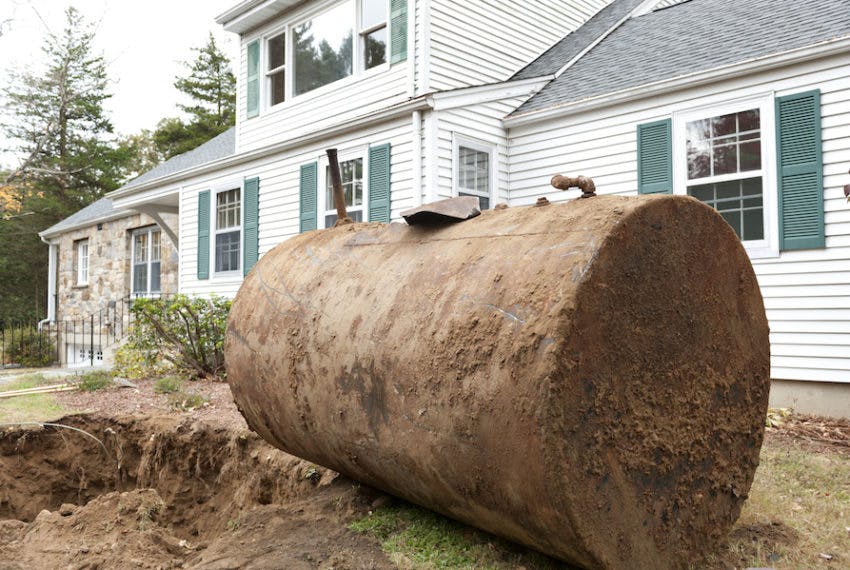When a home buyer is reading a residential property disclosure statement, under the Land heading, Question C reads:
“Are you aware of any past or present underground oil storage tank(s) on the Premises? “
A seller could be stating No, but that doesn’t mean that there is not an underground oil tank, only that the seller is not aware of one.
A big fear for home buyers, lenders, and insurers is the possibility of an underground storage tank (UST) that would have had oil stored in it for heating a home. USTs were often used in homes that were built prior to 1970. In some municipalities, USTs were encouraged as lot sizes were smaller and above ground tanks took up a lot of room. The thought was to bury them to make more efficient use of outdoor space. An underground oil tank can cause many issues, mainly contamination to the surrounding soils and groundwater if unused over many years. To mitigate the potential hazards of purchasing a home with a UST, you can hire a company to scan the property to find out if there ever has been one located. Additionally, a seller whose home was built before 1970 and who has never had his or her property checked would be wise to scan the home and property to prevent any issues during the sale.
If the home you are purchasing was built prior to 1970, it is worth having a company come in to scan for an UST. Companies that specialize in this service will use a remote sensing device designed to target potential locations of where the UST could be located or where the UST was located. This locale is called the nest. Just because a UST has been removed does not mean that there is not contamination as it could have been removed without properly draining the oil, or the tank could have had deteriorated and therefore leakage and overfilling could have occurred, and without proper environmental clean-up, contamination could arise.
Some indicators that the technicians look for are:
-Existing fill or vent pipes
-Evidence there was fill or vent pipes
-Evidence of copper lines
-Above ground storage tanks
-Depressions in the ground where the tank nest could have been. This can result in concrete or asphalt patches.
If a UST has been found, removal is necessary and environmental testing would be required if there is any evidence of oil leakage. Typically, this evidence is demonstrated through smell and visual difference in soil.
Companies that scan for underground oil tanks and service Central Vancouver Island:
ScanPlus Locating, www.scanplus.ca, P: 778-352-4770
West Coast Scanning : 250-951-3191 www.westcoastscanning.ca



